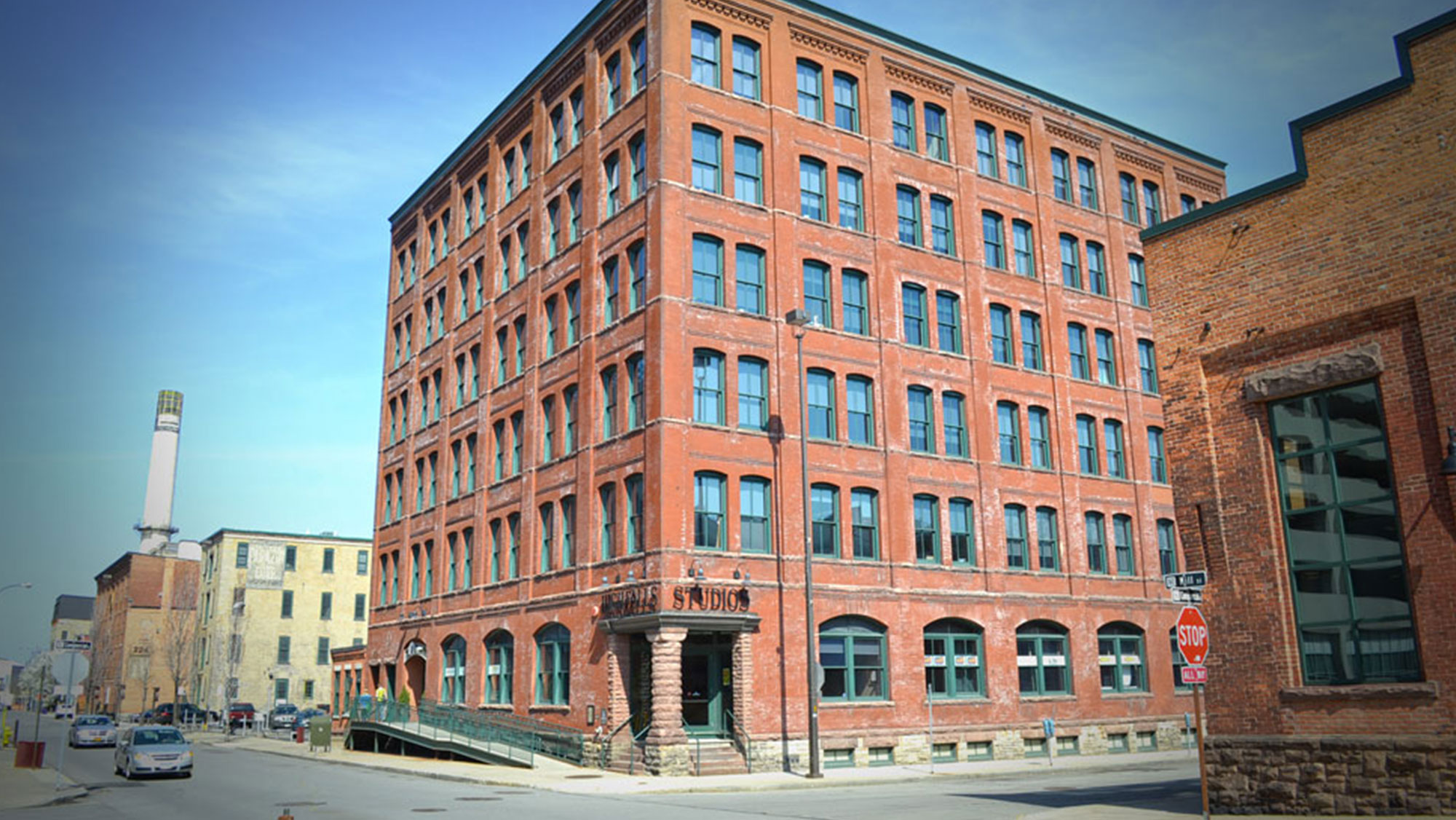Historic Building Research Guide
How to Research a Building’s History
Owners often find it fascinating to learn more about their homes or business properties, and this information is designed to guide them in their research. See also:
- “Finding the History in Your Home” (Old House Web)
- National Register Bulletin 39: Researching a Historic Property
Some of the things owners and other researchers typically want to know about buildings include:
- Approximate date of construction
- First owner of the building and his occupation,
- The building’s original use
- Major changes in building or in use.
- A chronological list of owners and occupants, their occupations,
bibliographical notes. - Changes in use or in physical state of the building and grounds.
- Names of architect and contractor, information about them.
- Events of importance connected with the structure.
- The building’s relationship to the neighborhood and community.
This outline covers historical research of a building. You may wish to do architectural documentation as well, including description, photographs and maps. The Landmark Society can also help you with that effort.
On-Site Inspection
There are many items important to note:
- Material of construction (frame, masonry, etc.)
- Shape of ground plan (for use in working with maps)
- Location in relation to side streets and prominent features such as railroads, churches, etc.; setback from street and lot lines (street names and house numbers change, but these relationships remain more constant and will be reference points in using maps).
- Information given on the building: house number, name, date, signs, etc.
- Current use, and other identical buildings.
If there is a plaque, historical marker, cornerstone, commercial, etc., record information from it as well as the source, e.g. State historical marker, cornerstone, name carved on façade, business sign, etc.
Estimate the period when building was constructed, if no definite evidence is found on sight, judging from style. This will help avoid attributing the date of an earlier building on the site to the later one that replaced it. Note apparent changes in the physical state of the building such as porches added or enclosed, 20th century siding, picture windows added, etc. These may correlate with changes in ownership and use.
Then start documentary research. The following sources are suggested. No one source has all the information; each provides clues to the history of your building.
Rochester Public Library – Local History Division, 115 South Avenue, 428-8730
Maps and Plat Books: Maps of 1832, 1851, 1875, 1882, 1900, 1910, 1918, 1926 and Sanborn Insurance maps of 1938, show individual lots and buildings, some with owners. These maps can bracket the time period during which the buildings appeared. A suggested procedure is to identify the building on a current map and then work backward in time.
Beware confusing the building now on the site with an earlier one! Material of construction, size, outline, location on site can give clues. Confirm estimate of construction period by style of building. If the style of building now on the site would not have been built in the period when a house first appeared on the site, the building is either a replacement or has been reconstructed in a later style.
Record, with sources, time period when building appeared, apparent changes in structure and outbuildings, names of owners, name of street, house number, lot number.
City and House Directories: Directories are available from early village days to the present (with a gap in the 20th century). City directories have listings by name of person or business until 1892; thereafter, City directories list by person or business and House directories by address. Starting in the 1920s, city and house directories were combined into a single book. Listings are for residents (occupants) who may or may not be owners. Some directories have a symbol indicating the owner.
Look up names found on maps, abstract of title, etc., going forwards and backwards in time. Note occupations, businesses, number of rental units, etc. Beware of changes in street names and house numbers! Check maps and lot numbers to be sure you are dealing with the same building, even if the house number changes. Lot numbers remain more constant than house numbers – one change is included in 1884-1885 directory.
If you do not find a name under one spelling, try another. An omission of a name does not necessarily mean a person was not there. Directories may omit occupants who do not report.
Other Local History Division sources:
- Newspaper index
- Scrapbooks
- Ready Reference file
- Blake McKelvey’s books on Rochester History
- Rochester Historical Society publications
- Rochester History (periodical published by the Office of the City Historian)
- U.S. Census, including statistics for tracts and blocks (old census records are open, i.e. records for individuals may be consulted.)
Compare any pictures you find with present states of buildings. Beware artistic license in using drawings.
Local Library Branches and Historical Societies
Your local library branch and historical society may have additional resources specifically related to your neighborhood, town, or village.
This section of the Rochester Public Library website contains an outstanding searchable collection of historic photographs from the Library’s collection as well as from other local photographic collections.
City/County/Village/Town Historian’s Office
Consult the County Historian, 428-8352, for use of files and for New York census.
The City of Rochester Historian’s Office is located in the Central Library, 115 South Avenue, 428-8095
Call your Town or Village Hall to reach your Town or Village Historian.
Art and Architecture Division, Rochester Public Library
Information about architects, styles, periods, etc.
Local sources:
Landmarks of Rochester and Monroe County by Paul Malo
Architects and Architecture in Rochester by Carl and Ann Schmidt
Tax Assessor’s Office, Rochester City Hall, 30 Church Street
Tax rolls and individual cards will show:
- Current owner
- Size of lot
- Past owners
- Uses of building
- Materials
- Photographs
- Assessed valuation
- Age of buildings as estimated by assessor
- Number of apartments known to assessor
- Tax account number
Assessor’s maps show lot dimensions and buildings in large scale.
Estimate of date is an assessor’s guess until recently, when building permits began to be required. Date must be confirmed by other sources.
Maps and Surveys Office, City of Rochester Environmental Services Department, 428-6873
- Maps of various scales
- Record books with some owners’ names
City of Rochester Planning Bureau’s Graphics Office, Department of Community Development, 428-6953
Current maps of various scales, including ones showing buildings and lot lines with house numbers. Scale of 1″ = 100′ is good for an area survey.
Monroe County Planning Department, 428-2970
Maps of towns and villages: Most do not show buildings and house numbers, but do show lots.
Surveys, books and files on individual buildings
Books on architecture, local history, preservation
Current and historical maps
Photographic prints and slides on individual building
Rochester Historical Society, 485 East Avenue, 271-2705
The Rochester Historical Society’s collections focus on social and family history.
Rochester Museum & Science Center Research Library, 657 East Avenue, 271-4552, x315
The RMSC Museum library houses books, pamphlets, published materials, audiovisual, and archival collections, including photographs, focusing on anthropology, local and regional history, local and regional natural history, museology, and collections care.
City of Rochester Water Bureau, 10 Felix Street (corner of Dewey)
Rochester’s Water works started in 1873. Records show date when service was started for each street and each property, name of earliest owner on their records and sometimes-subsequent owners. Earliest owners on record are undated but seem to be between 1913 and 1919.
Rochester Gas and Electric Corporation, 80 East Avenue
Records for dates gas was supplied to properties after time present company’s records started, about 1905. 19th century dates listed as “before 1905”.
Building Permit Office, City of Rochester Department of Community Development, 428-6526
From computer: current owner’s name, date of building permit, estimated date of construction (usually Tax Assessor’s office estimate). Permit number.
From deed files: if a building permit is on file, it may have an architect’s name, contractor names, physical and use information. Cards missing from deed files may be in “trouble file” not filed in any order.
Building permits began to be issued about the turn of the century, spotty before the 1920s.
Monroe County Clerk’s Office, County Office Building, 39 West Main Street, 428-5151
Deeds, mortgages, corporations, licenses (marriages 1908-1935, thereafter, see City Clerk’s Office), maps of tracts, some plat books.
A title search is the only sure way to know who owned the property, but note that title is to the land. Improvements, such as the building, may or may not be mentioned in the deed. Therefore, a title search will not usually tell you when a building was constructed; however, the prices recorded for sales may give you a clue. The owners’ names may be looked up on maps and in directories.
To start the chain of title, you must know either the current owner or an earlier one (with the approximate date when he might have transferred the property) in order to look up his name in the Grantor/Grantee Index.
Lusk Method of locating in Grantor/Grantee Index: use surname, go down the first two letters of the name and across the third letter. This gives the liber and page number for the deed for that transfer.
Then work backwards and forwards in time until you have a complete chain of title.
The County Clerk’s office has begun putting a large number of records online, starting with the most recent.
City Archives & Records Center, 414 Andrews Street, 428-7331
The City Archives & Records Center stores Field Assessment Cards for Rochester properties for the years 1927-1980. These cards contain information concerning every plot in Rochester, including previous owners and residents of the property. Best of all, many files – but by no means all – include drawings and/or photographs of the buildings.
In addition, the Archives & Records Center keeps an extensive photographic collection, including many photographs of streets and buildings.
Monroe County Surrogate Court Office, Civic Center, Room 501, 428-5200
Wills, lists of property, including buildings, dating back to 1821.
Information from Owner/Occupant
Archives and published booklets of the institution itself, in the case of business, churches, schools, etc.
Interviews: Recognize that memories distort; check against other evidence.
Abstract of Title: If owner will permit you to consult his abstract, copy it. This will save you having to make a title search for the period covered by the abstract, though it may not go back to the time the building was constructed, so you may need to extend it.
When you have finished collecting your research:
Prepare a summary report of your findings.
Comments on building by historians or architect: quote verbatim, with source.
Include copies of any articles about or pictures of building and important owners or events associated with, if possible.
Record sources for each part of the information.
Record dates of changes in house numbers and street names
Compare and collate all information. For example, compare ownership information from maps and deeds with occupancy information from directories. Map evidence of a building on the site with style of building; construction dates as suggested by maps and style with tax assessor’s estimate and building permit; oral reports with written records.
Date your report and include your name and address.
Make copies for the Landmark Society and for your local historian and/or library branch!



